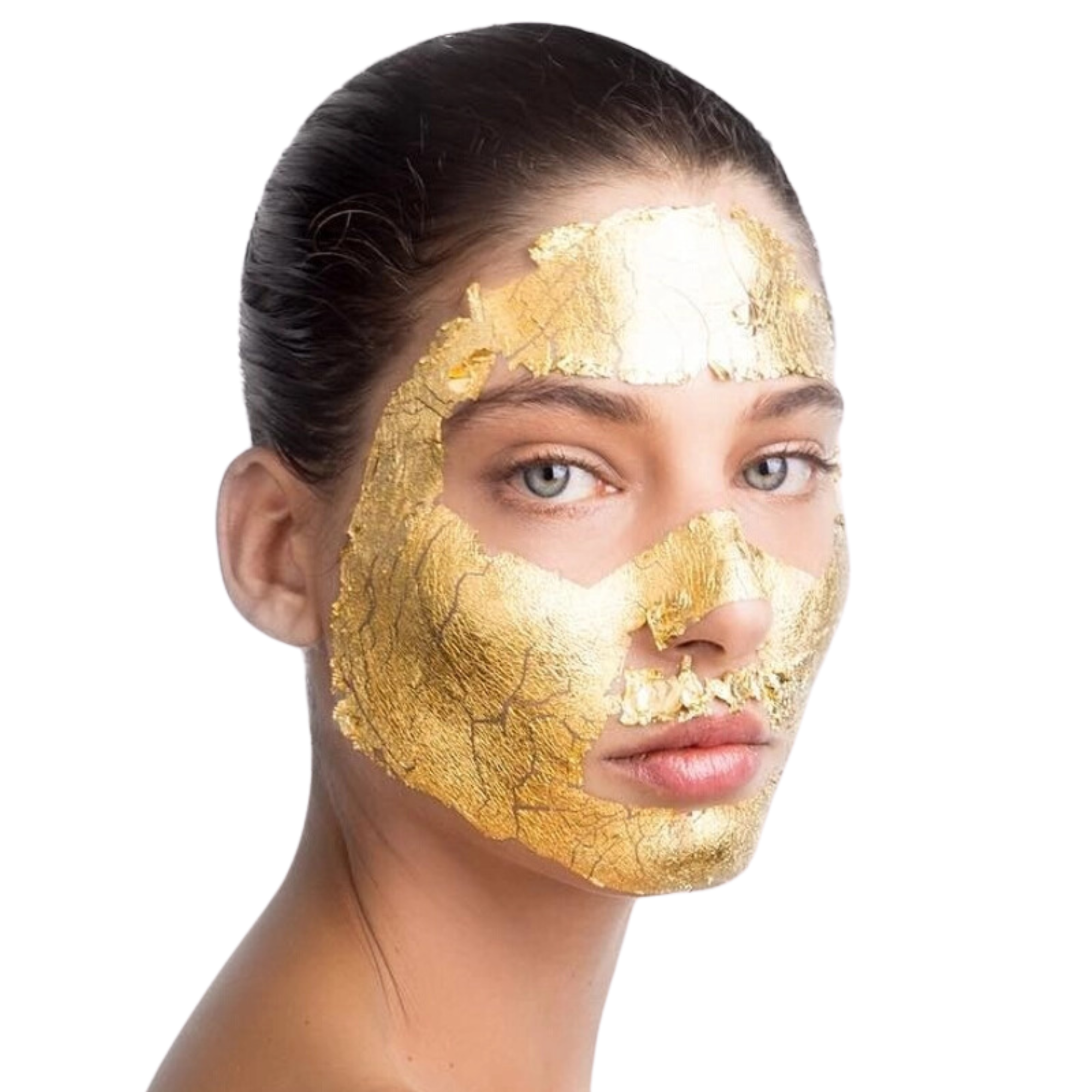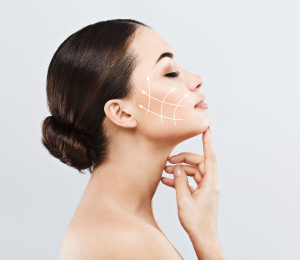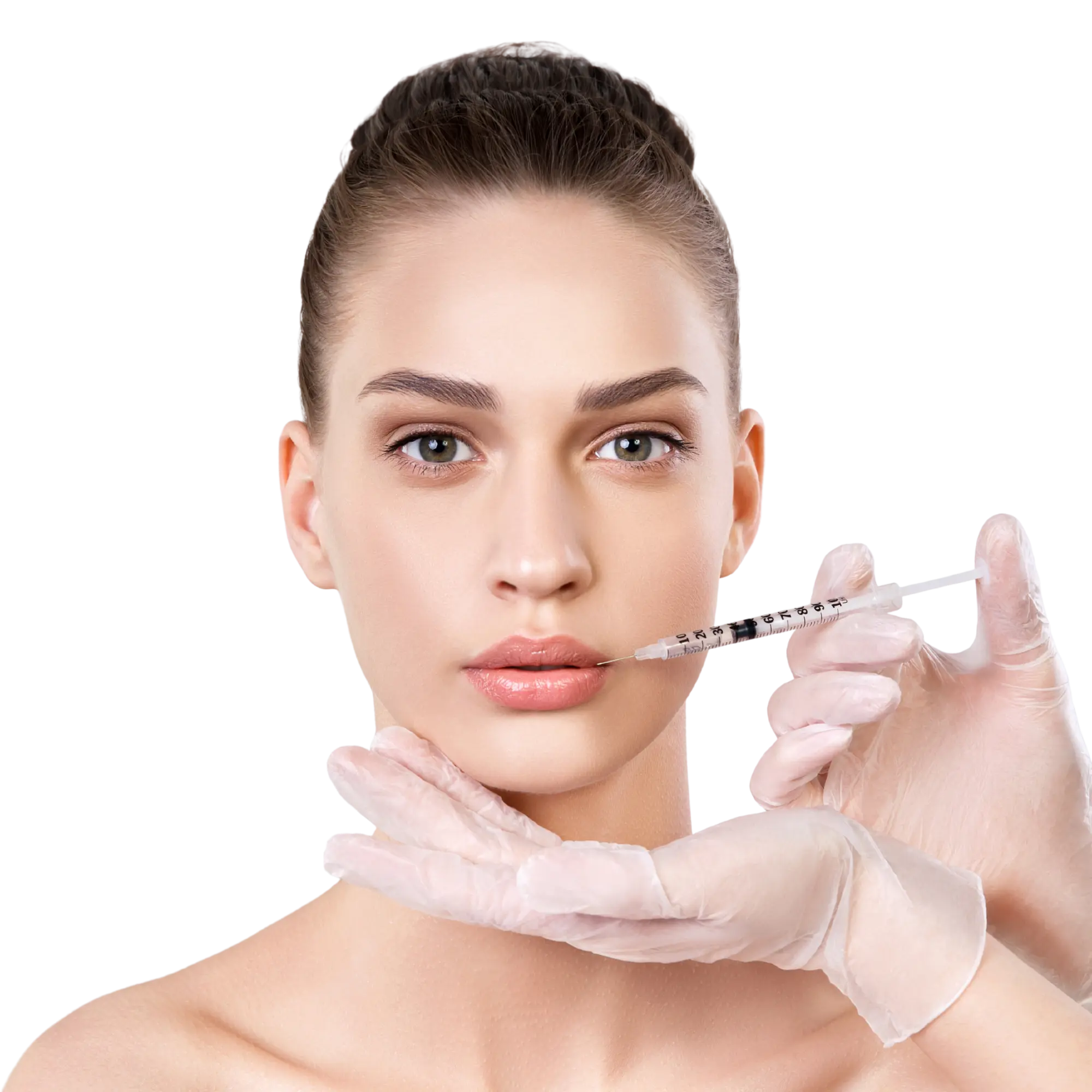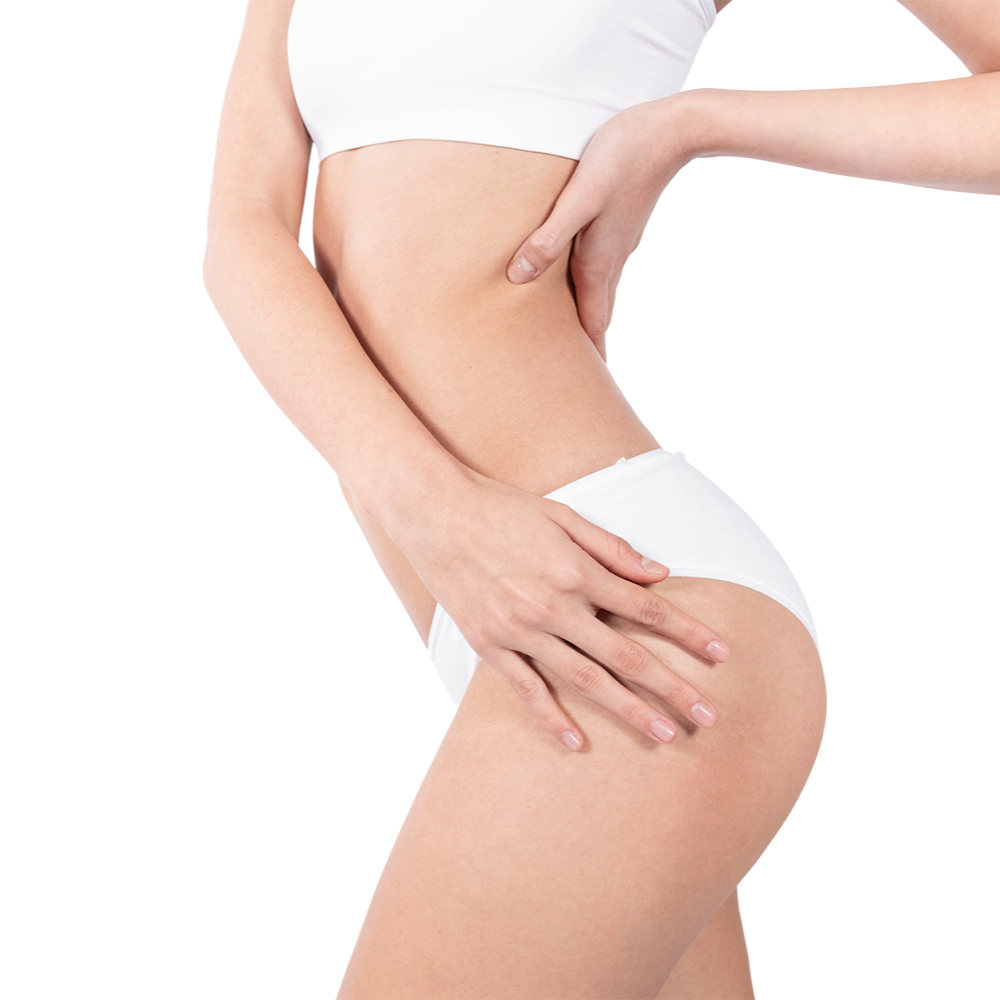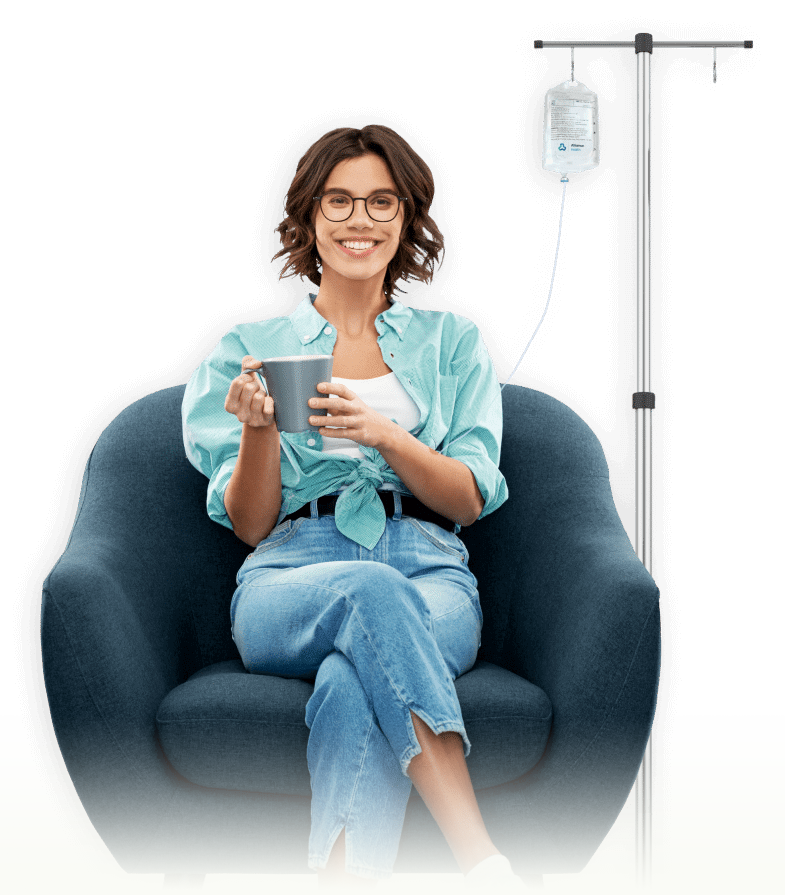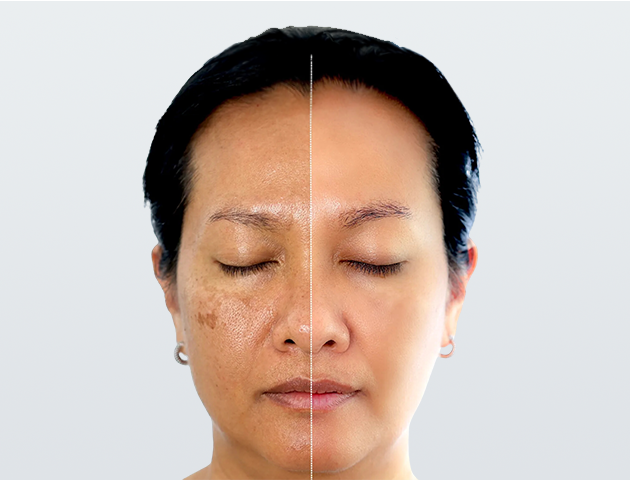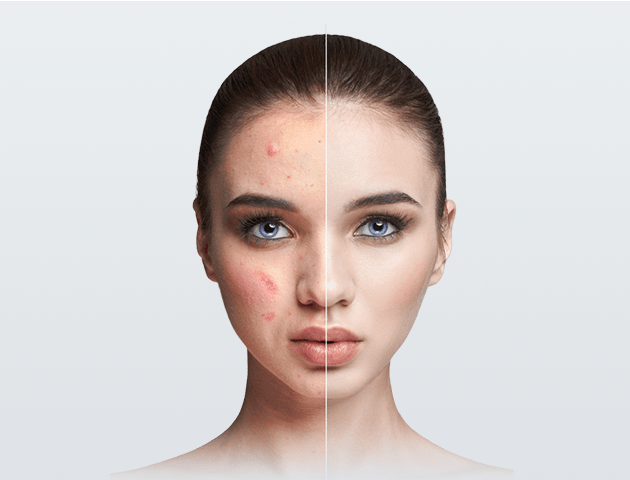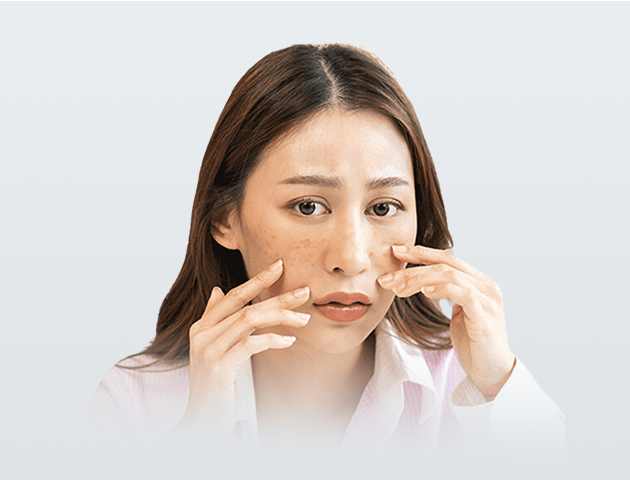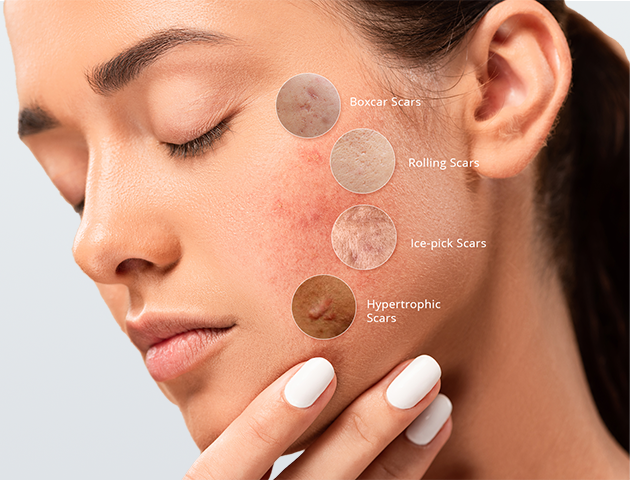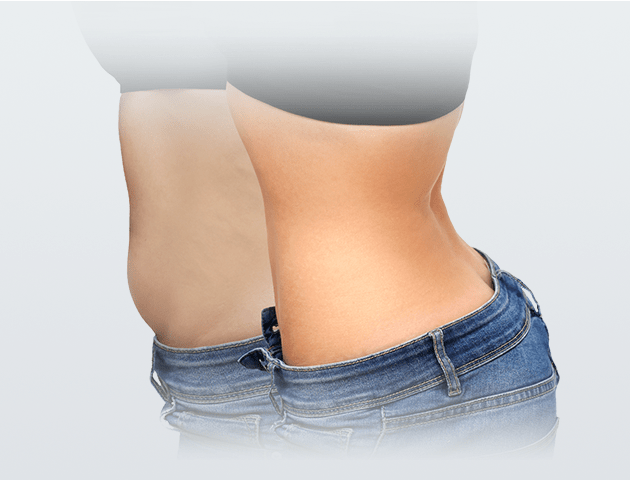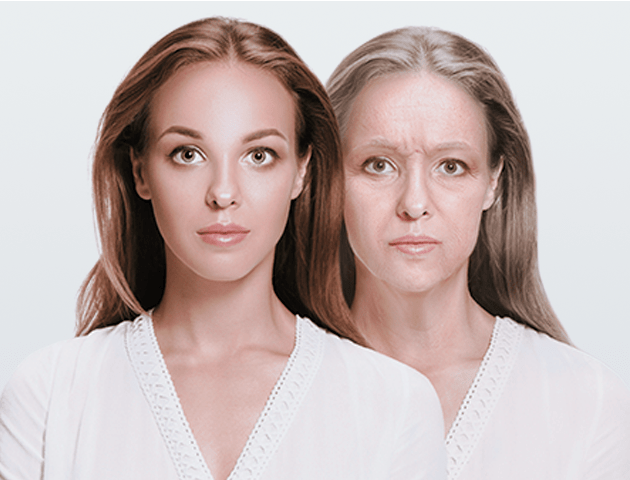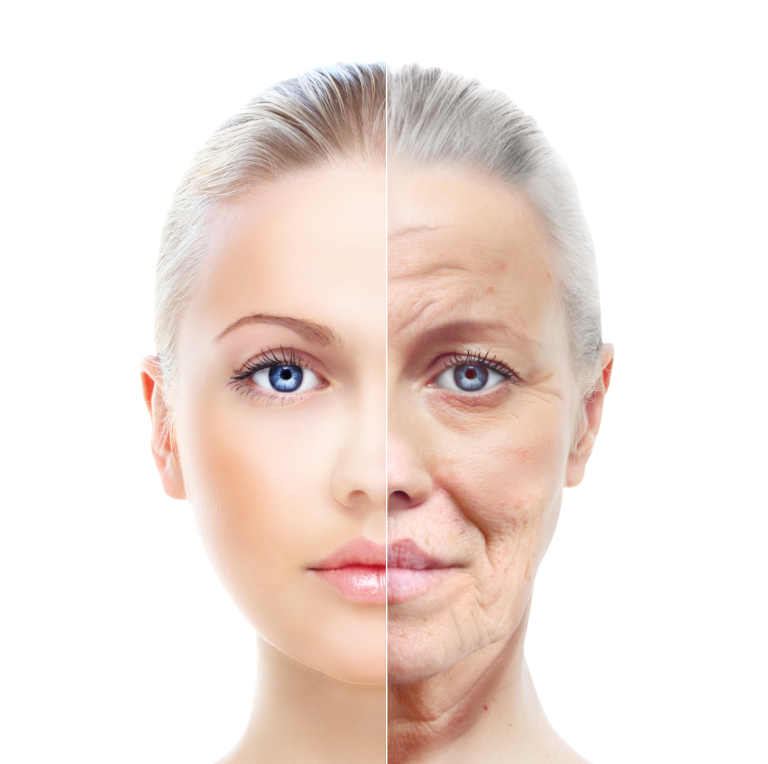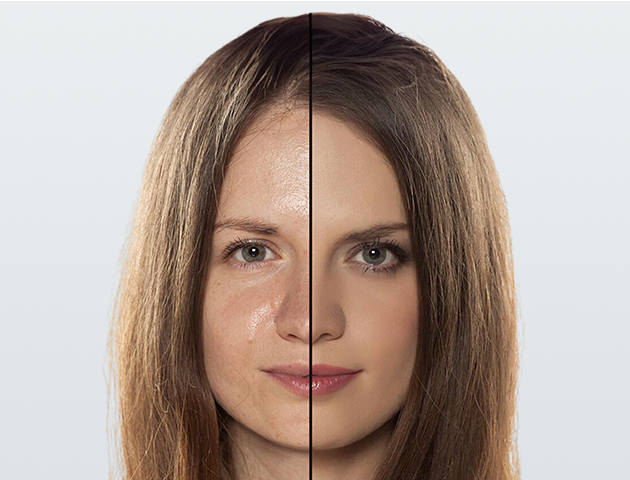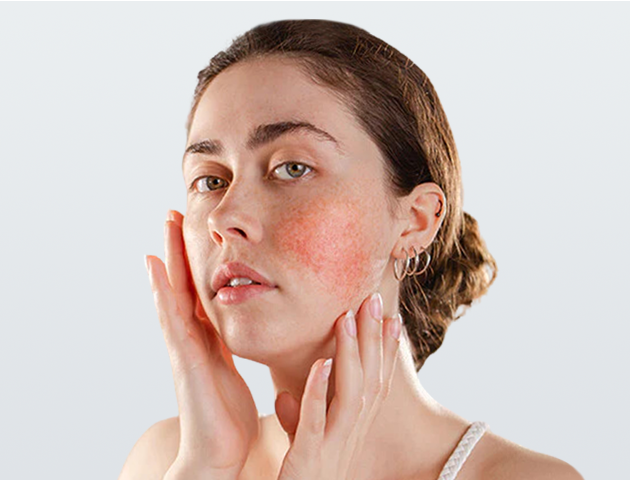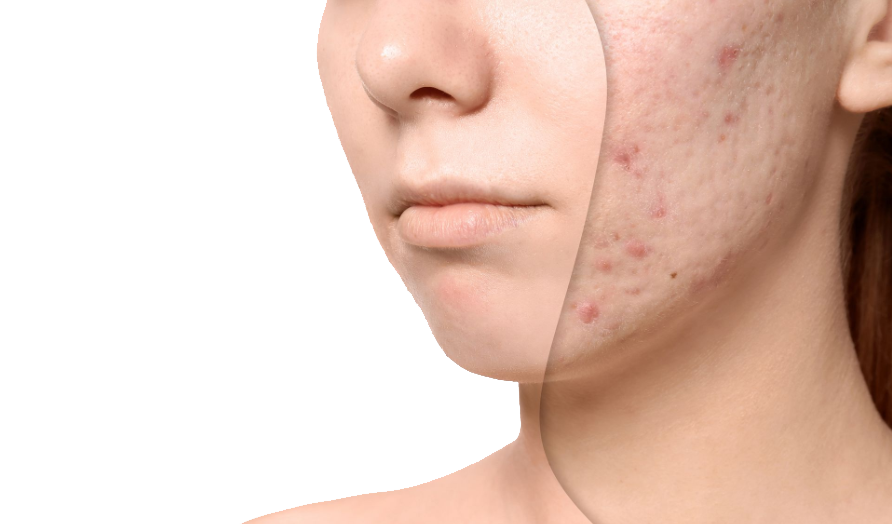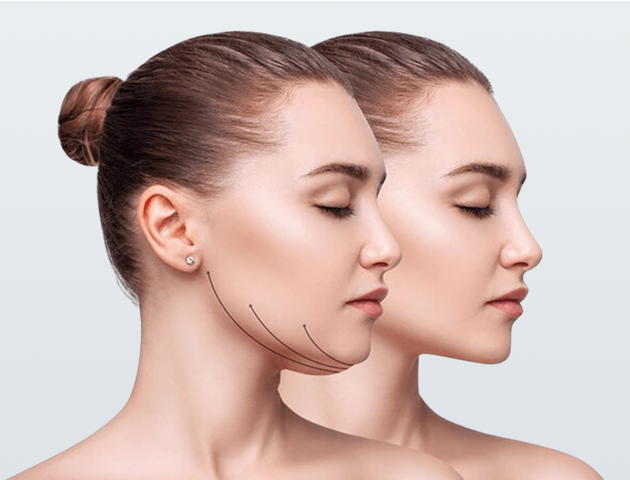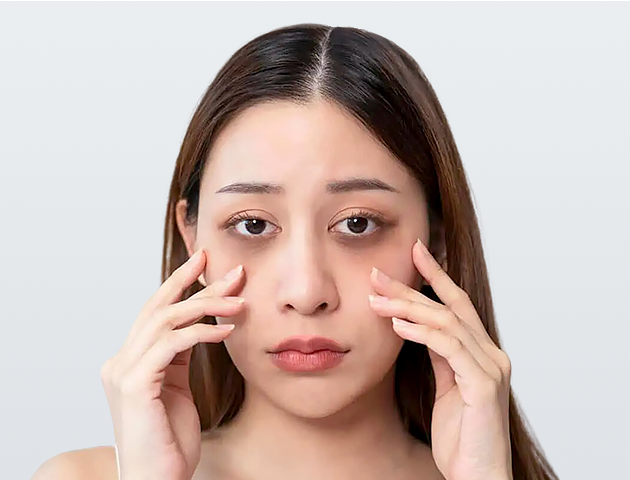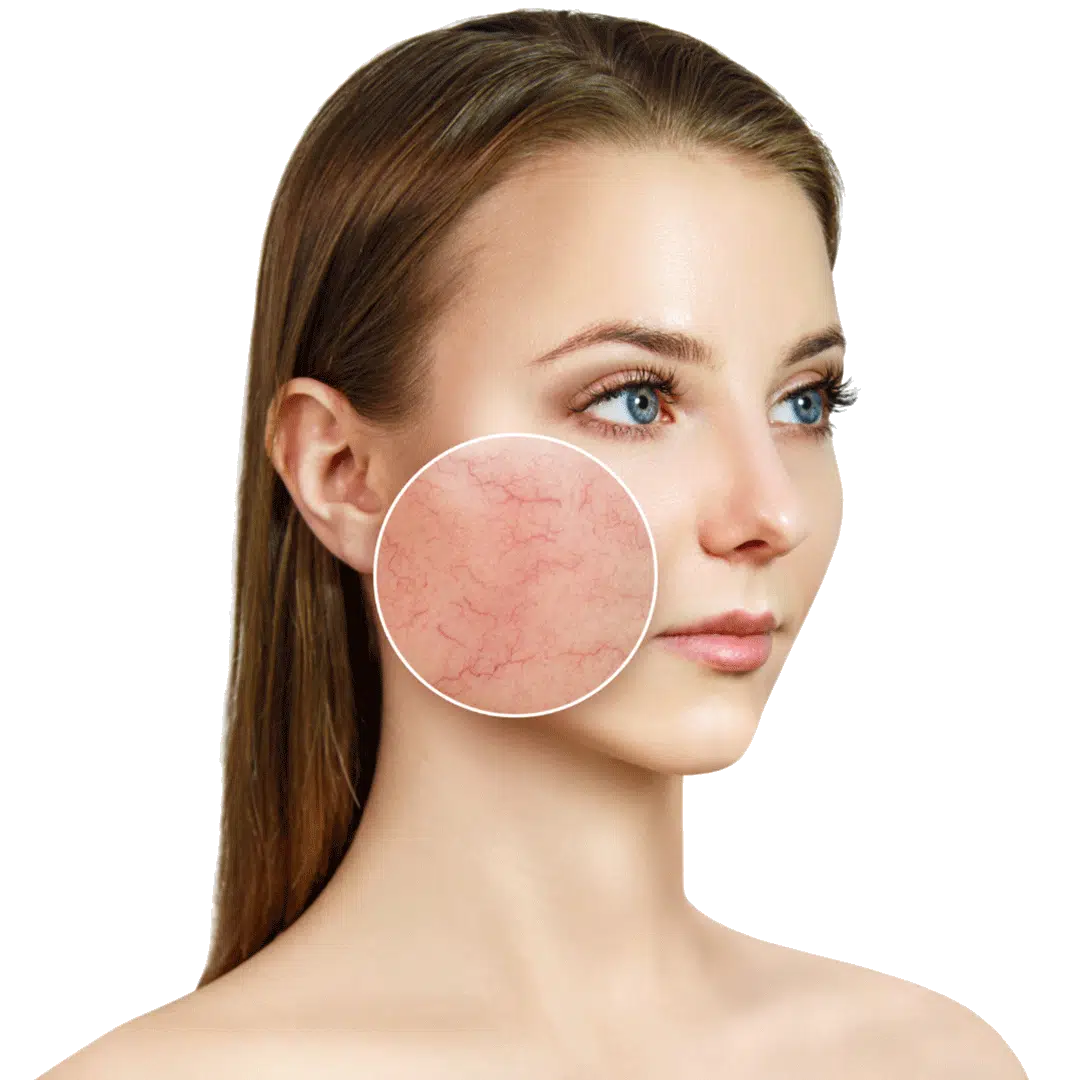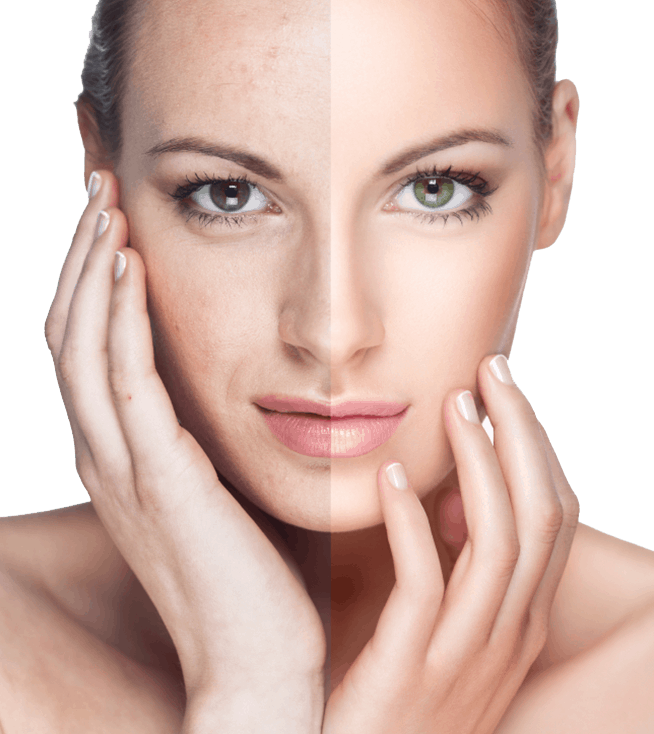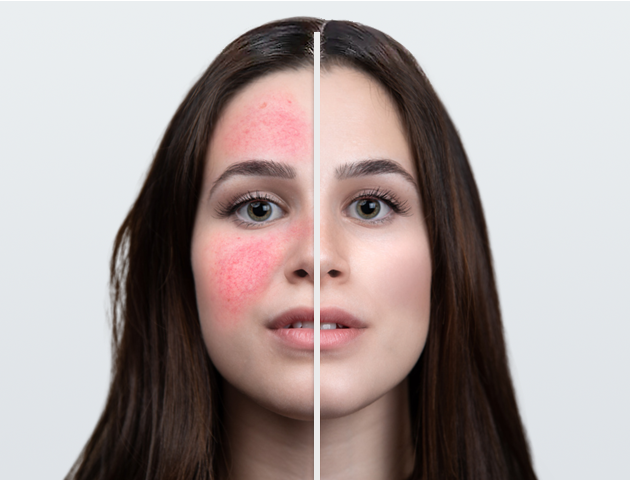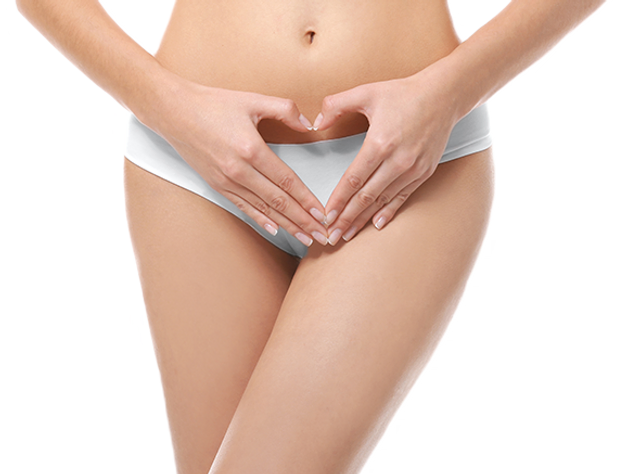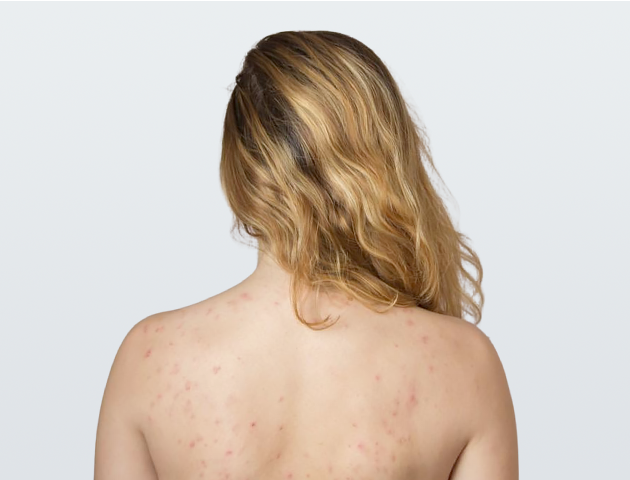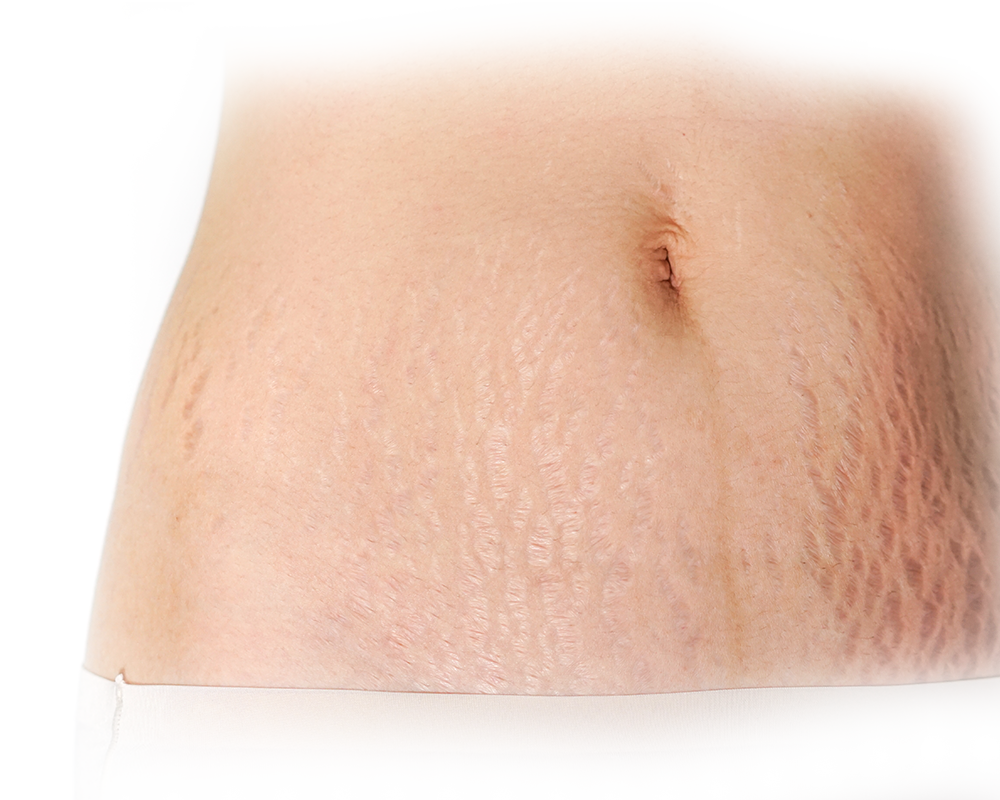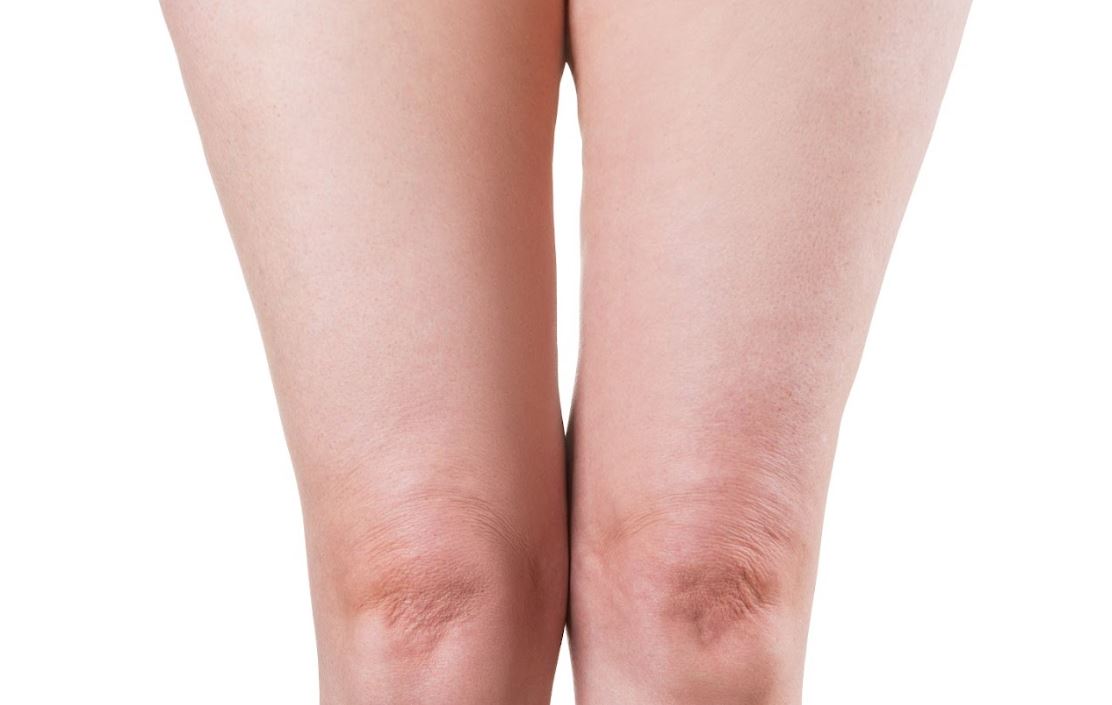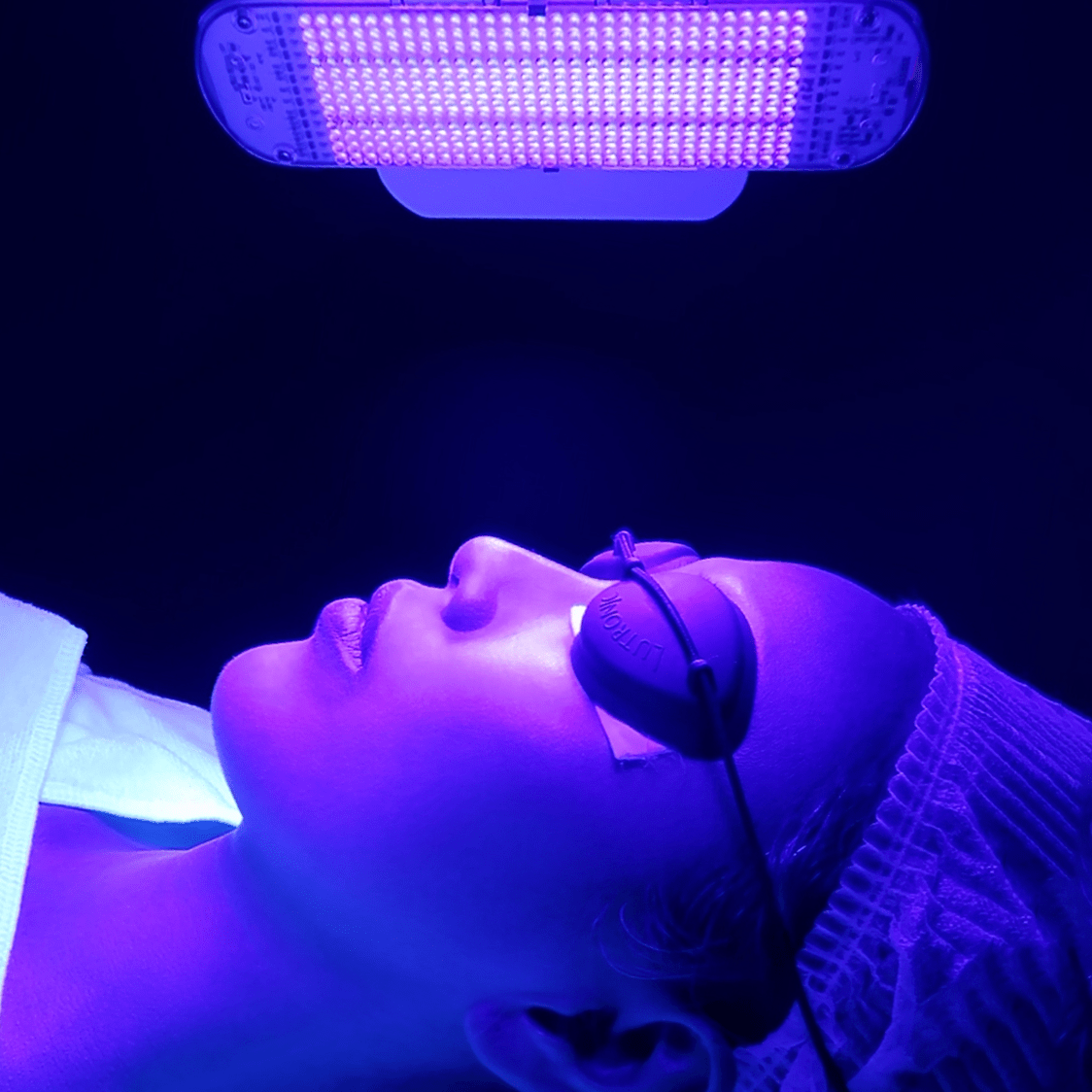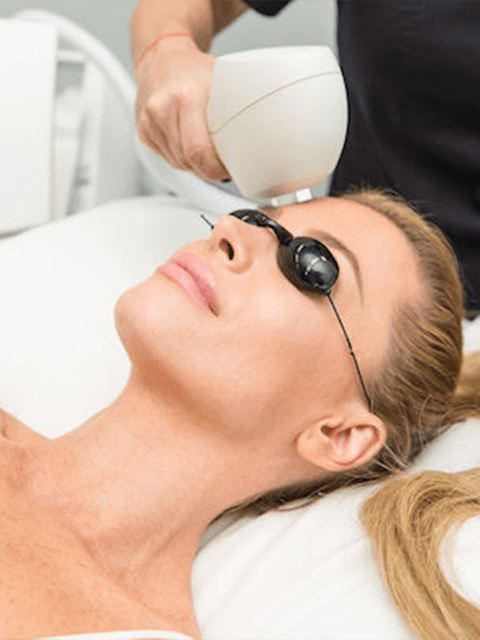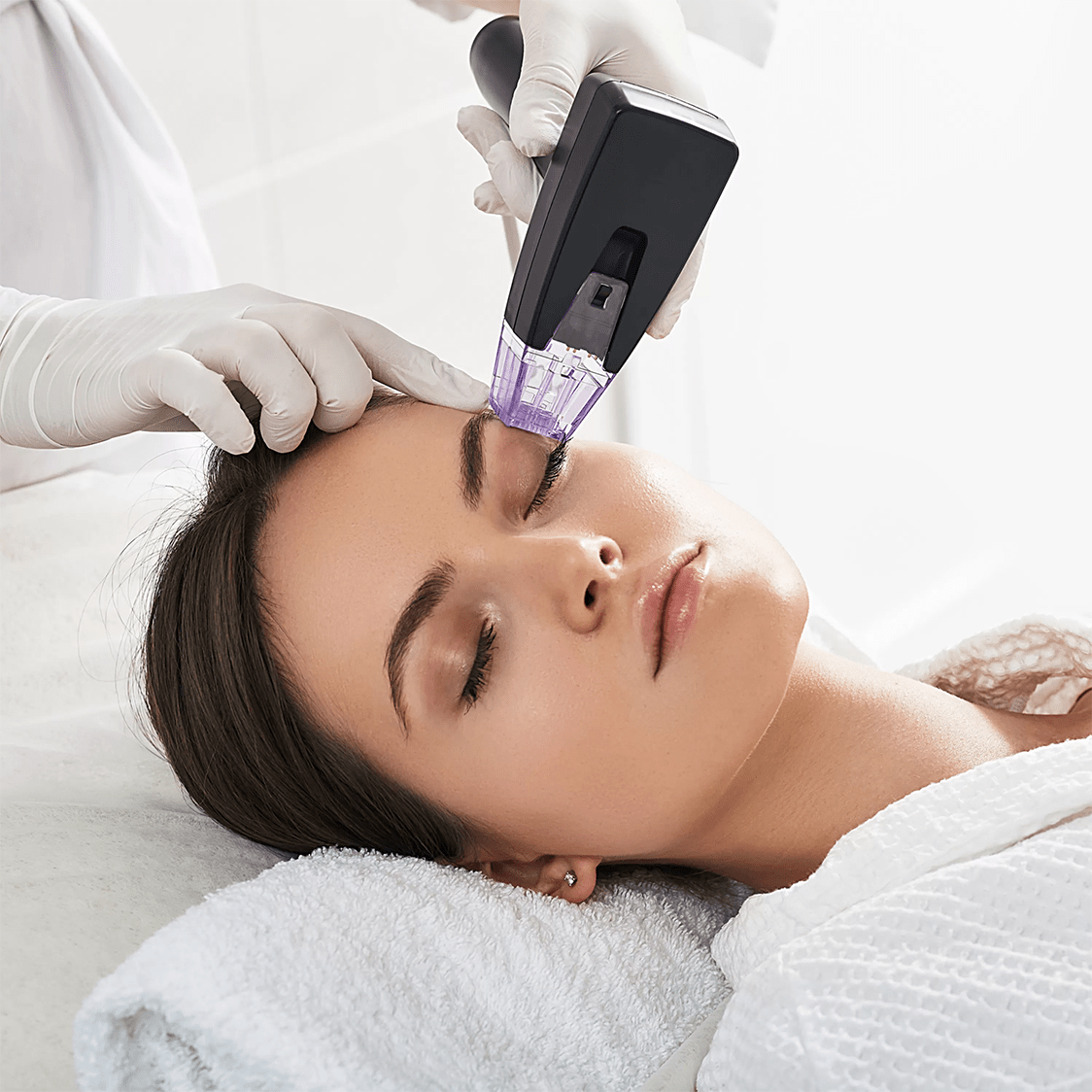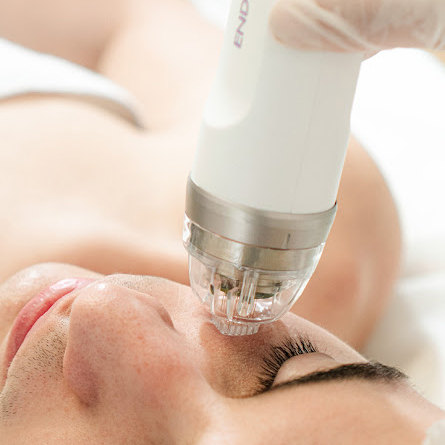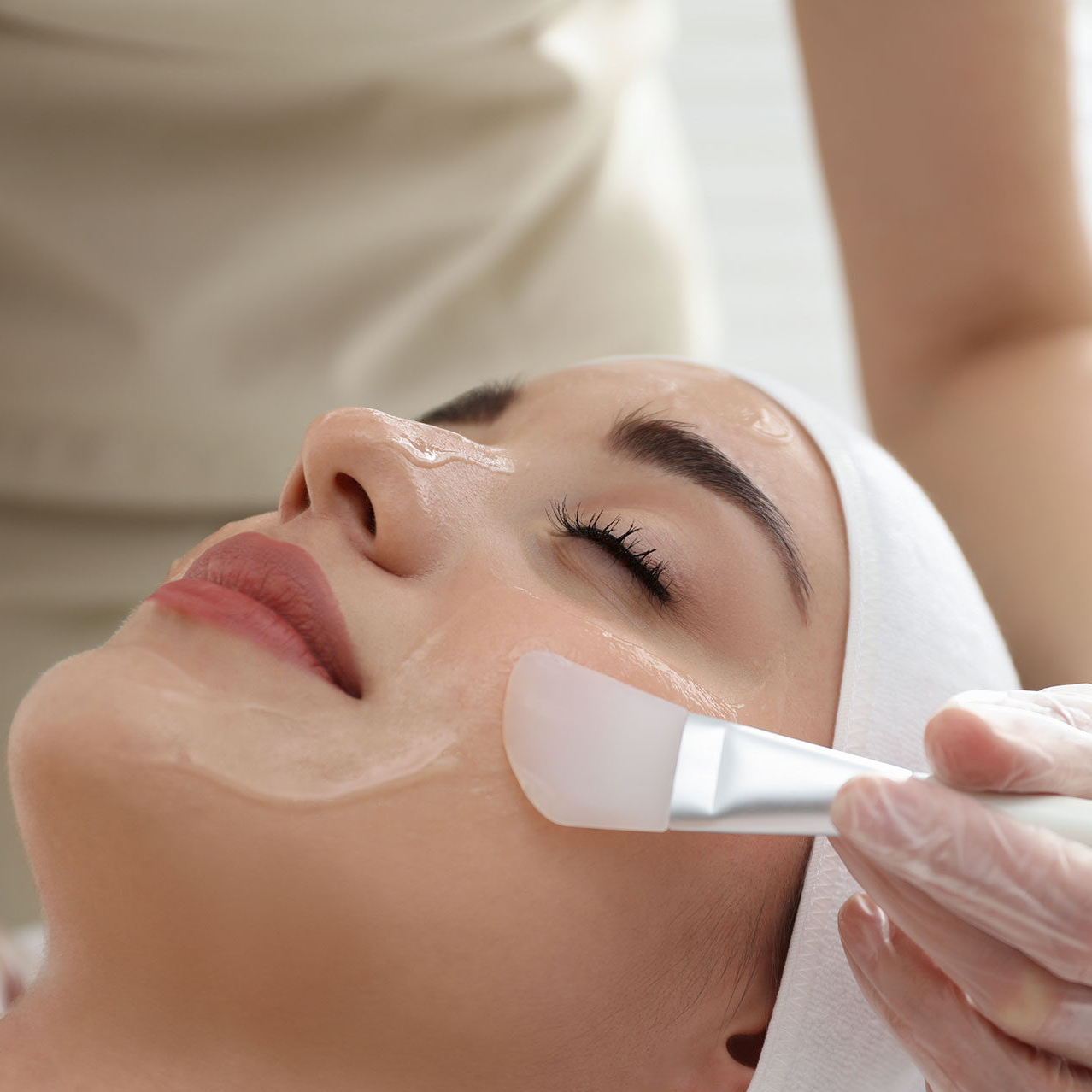Acne-prone skin
Acne-prone skin is a skin type characterized by a heightened susceptibility to developing acne, which includes various types of pimples, blackheads, whiteheads, and sometimes more severe forms like cystic acne. This condition often results from overactive oil glands, clogged pores, and can be influenced by factors like genetics, hormones, and skincare habits.

RECOMMENDED TREATMENTS
Clear Blue
Clear Blue is a pain-free, non-invasive treatment for moderate inflammatory acne (pimples) in all age groups that has now been cleared by the FDA. I-Clear utilizes innovative Photo Dynamic Therapy (PDT) technology to effectively target acne-causing bacteria without thermally affecting surrounding tissues using light.
Photo Facial
Photofacial is a “quick-fix” procedure requiring virtually no downtime to rejuvenate the skin and restore a youthful glow. It stimulates new collagen to form in the skin thereby reducing fine lines, minimizing pore size and acne scars, and increasing skin elasticity. Intense pulsed light also diminishes flushing or redness of the face associated with Rosacea, reduces brown spots, erases broken capillaries, and smoothens rough textured skin.
Morpheus8 For Face
Morpheus8 applies radiofrequency technology combined with super-fine microneedles (RF Microneedling) to comprehensively rejuvenate both the face and body, promoting skin rejuvenation and firmness, and improving skin texture and surface.
Zoom360+
The New Level Of Skin Resurfacing. Overall Skin Rejuvenation Effects Microneedling is a safe and effective minimally invasive modular RF fractional solution for face & full body subdermal adipose remodeling. The treatment effectively remodels skin and tissue with minimal risk of post-inflammatory hyperpigmentation and simulates the production of collagen in the underlying layers of the dermis.
Glamour Peel
Return your face to its soft, supple complexion by renewing collagen and elastin, eliminating wrinkles, reducing pores, removing acne scars and blending uneven skin tone. At Glo365, we use a unique blend of skin peels, containing naturally occurring fruit acids and active cosmeceutical ingredients to enhance your appearance.
Treating acne can involve a combination of skincare practices, advanced technology treatment, lifestyle changes, and, in some cases, medical intervention.
Here are some general strategies to help treat acne:
- Cleansing: Use a gentle, non-comedogenic cleanser to wash your face twice daily to remove excess oil, dirt, and bacteria.
- Lifestyle Changes: Maintain a healthy diet, stay hydrated, and manage stress, as these factors can impact acne. Avoid touching your face and picking at pimples, which can worsen inflammation and lead to scarring.
- Sun Protection: Use a non-comedogenic sunscreen to protect your skin from UV damage, but avoid excessive sun exposure, as it can worsen acne.
- Avoid Harsh Products: Steer clear of harsh, drying skincare products that can irritate the skin and exacerbate acne.
- Regular Exfoliation: Gently exfoliate to remove dead skin cells and prevent clogged pores. Avoid aggressive scrubbing, as it can damage the skin.
- Moisturize: Even if you have oily skin, use a lightweight, non-comedogenic moisturizer to maintain skin hydration and prevent excessive oil production.
- Consult a Dermatologist: If your acne is severe, persistent, or causing scarring, consult a dermatologist for personalized treatment options. If your acne is more severe, a dermatologist may prescribe topical or oral medications.
Treatment effectiveness can vary depending on the individual and the type of acne, so it’s essential to be patient and consistent with your chosen regimen. A dermatologist can provide the most appropriate guidance for your specific situation.

